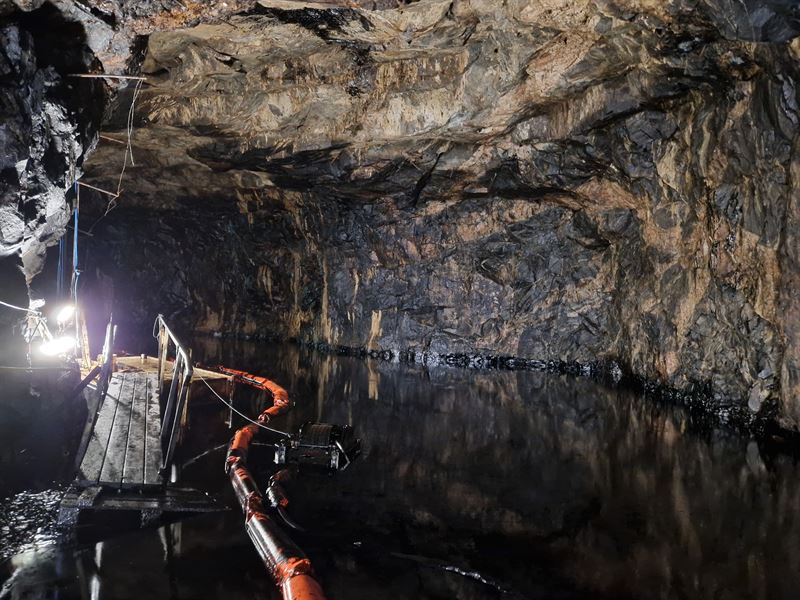FVB conducts a follow-up study on Europe’s largest hot water reservoir

In Västerås, Mälarenergi is building Europe’s largest hot water reservoir in a rock cavern. The reservoir will hold 300,000 cubic meters of water, which can cover the district heating requirements in the city for up to two weeks. FVB has been commissioned by Energiforsk to conduct a technical follow-up of the reservoir.
The rock cavern was formerly an emergency reservoir for fuel oil but was shut down in 1985. It is now being turned into a huge hot water reservoir. However, first all the old oil must be cleaned up. As there was more oil left than expected, the clean-up has been difficult, and the work has taken longer than expected.
“The rock cavern consists of three spaces that are similar to three huge accumulator tanks that can be controlled individually,” explains Ulrika Sagebrand at FVB, who is leading the research project.
“We will perform measurements in one of the rock caverns, because we expect the other rock caverns to behave in a similar way,” she continues.
An important part of the project involves investigating how the temperature stratification of the water behaves. They will therefore install a temperature gauge at each meter and since the rock cavern is 25 meters deep, there will be a total of 25 temperature gauges.
There is a service tunnel above the rock caverns where personnel from Mälarenergi can access equipment and the hot water is fed in and out. There is also an instrument in the service tunnel that measures how much water there is in the rock cavern, its temperature and more.
“We do not have any such service tunnel over our measuring site, and this will be a challenge for us, so we will attach multiple sensors to a line with a sinker, which will keep them anchored to the bottom of the rock cavern and floating buoys that will hold the sensors up. It’s a practical challenge to get this in place and we are working on it right now. We will also use Mälarenergi’s measurement data for our analysis,” says Ulrika Sagebrand.
“In addition, we will find out how quickly the cavern is heated by the hot water. We will measure the temperature ten meters into the actual rock itself in five different places.
In the project, we will also summarize the current knowledge situation and describe how Mälarenergi has gone about the work of converting the rock cavern for oil into a hot water reservoir. Another goal of the project was to report results from the initial operation, but there will be changes due to delays in the clean up work. Mälarenergi had hoped that the rock cavern would be cleaned up and ready to be filled in the summer of 2023, but since the clean-up work took so long, they will not be able to start filling the reservoirs with hot water until May. They then have to wait another year, because the energy company has to fill hot water when they have access to cheap energy, which is during the summer months.
“It’s unfortunate for our research project, as we were going to follow up on how the project went from a technical standpoint with the storage and layering of the water. The study will be finalized in autumn 2024, and hopefully we can do that part in a follow-up.”
Ulrika Sagebrand still sees major benefits in the project.
“Even though we don’t have time to get all the values during the planned research period, we will have all the sensors in place, which is important since the caverns will be off limits in the future. These sensors will also be able to be used for other follow-up projects in the future.”
Why is this research project so important?
“There is a renewed interest in large-scale thermal storage in the district heating industry for environmental and economic reasons. Our study can provide important information for other seasonal storage solutions. New knowledge is needed because few studies has been done recently.
“A big difference from older studies is that there is now a greater interest in using existing rock caverns. Previously, new rock caverns were built for storage, but using an existing rock cavern involves some other challenges, and we’re looking at those in more detail in our research project.”






